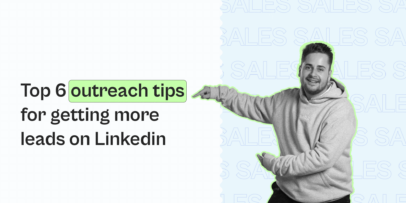B2B Sales Funnels – Ready-to-use Templates for Your Growth
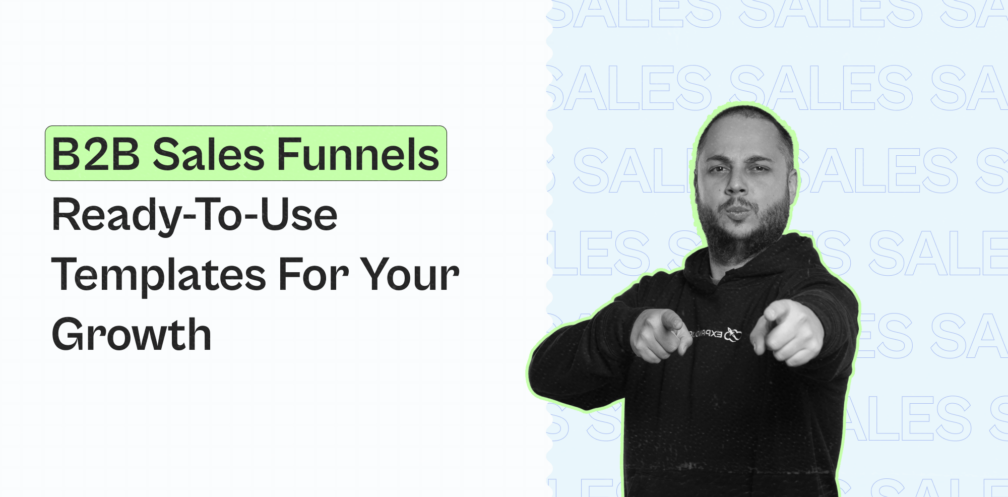
Sales funnel, customer funnel, sales cycle, buyer’s journey, purchasing process – all those terms refer to the same thing. As a marketer, you’re probably more than familiar with them.
The history of a sales funnel reaches back to 1898 when Elias Elmo Lewis created it. How is his idea still relevant today? Well, it pretty much isn’t, but that’s not to say we can’t learn from it.
The late XIX-century funnel had a wide top, with retailers relying on the abundance of attention from potential customers. During the 2024, the situation is the opposite – there is an infinite amount of information and limited attention spans.
Therefore, the digital marketing sales funnel model has a narrow top and fat middle, in which you want to keep the attention you’ve managed to grab. If you’re unsure about just how to do that, you’ve come to the right place.
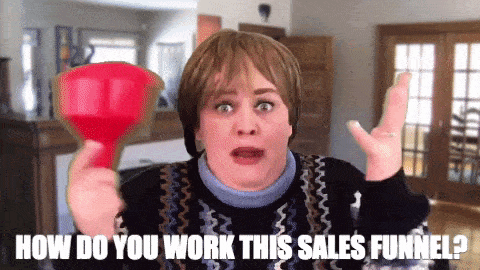
In this article, we’ll have a look at how to organize your B2B sales funnel to make sure it brings you the best results. You’ll also find out how to use the Expandi LinkedIn outreach automation tool to get the most out of your leads with limited effort.
Click here to go right ahead and test it out, or keep reading to find out more first.
What are B2B sales funnels?
B2B sales funnels are what you call a set of steps that a business-to-business company uses to guide potential customers through the buying journey. It starts at the initial awareness stage of a product or service and ends at the purchase process, although it can even extend into post-purchase engagement.

There are four main stages of B2B sales funnels:
- Awareness stage – the first step involves creating awareness about the product or service among your ideal buyer personas. This is usually done using a personalized marketing strategy. It can include content marketing, social media advertising or email marketing campaigns, to list a few.
- Interest stage, also called the engagement stage – the next stage of the sales pipeline is when new and existing customers become engaged and genuinely interested in the product or service. They may start to research and learn more about what your company has to offer and how it could benefit their business.
- Consideration stage (or evaluation stage) – at this step of the customer journey, qualified leads are considering your product or service as a potential solution to their business needs or existing pain point. They may be evaluating various options available on the market and comparing the unique features and benefits of each.
- Purchase stage, also called the decision stage of the conversion funnel – the final step, when the prospective customer makes a decision to purchase your product or service. This process includes negotiating the terms of the sale and finalizing the purchase.
B2B sales funnels are designed to guide your prospects through each step of the different stages, with the goal of ultimately converting them into returning, paying customers.
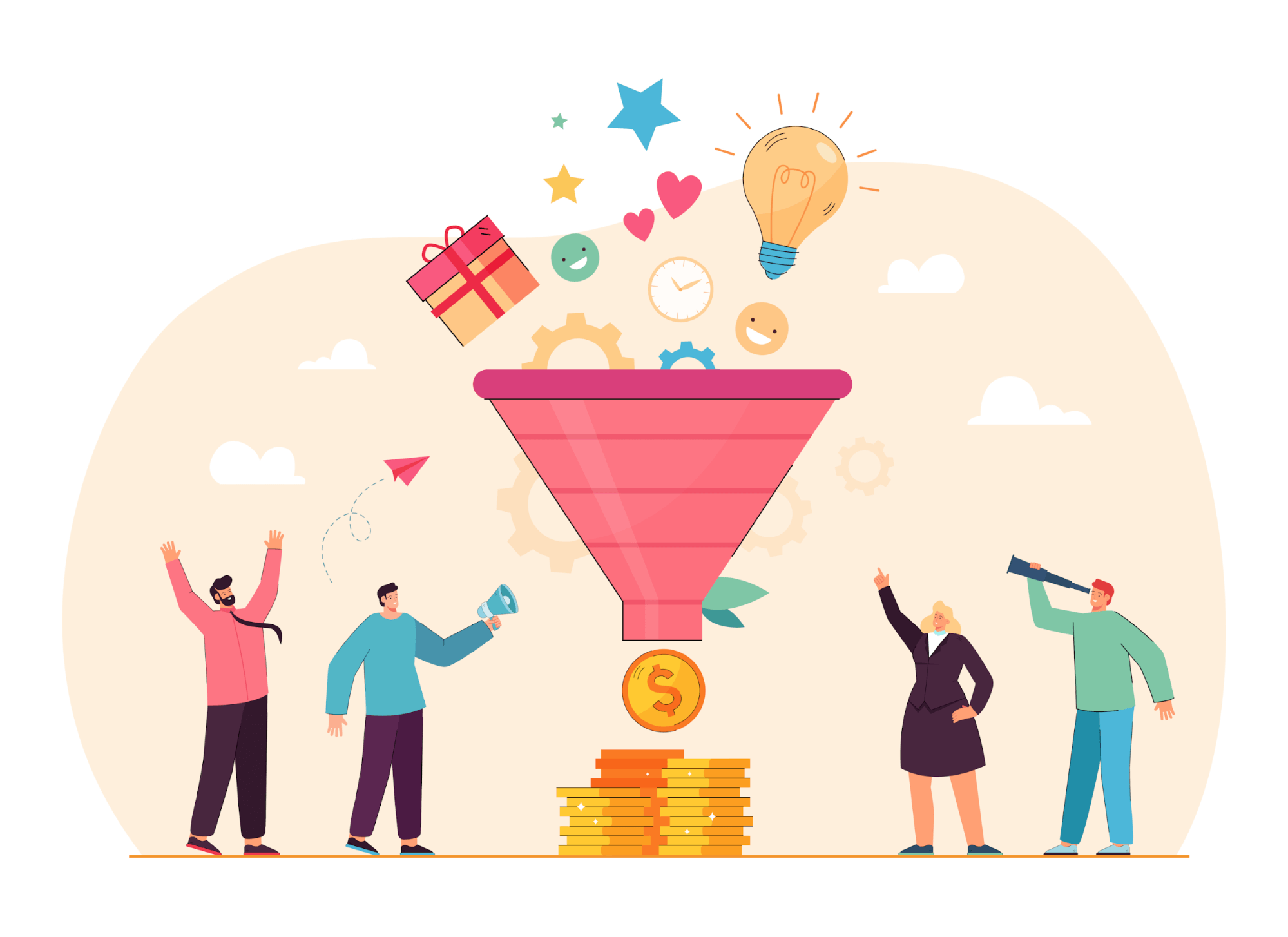
The key to the success of any sales funnel model is understanding the unique needs, preferences and pain points of your prospective buyers. These can vary at each of the funnel stages.
Outbound B2B sales funnel template to improve your sales process
An outbound B2B sales funnel is focused on the methods a company uses to proactively reach out to potential customers and guide them through the buying process. This can involve sales channels such as email, phone calls, in-person meetings and events.

In contrast, inbound B2B sales funnels focus on attracting potential customers through different marketing efforts such as content marketing, search engine optimization and social media advertising.
Step-by-step template for creating an outbound B2B sales funnel
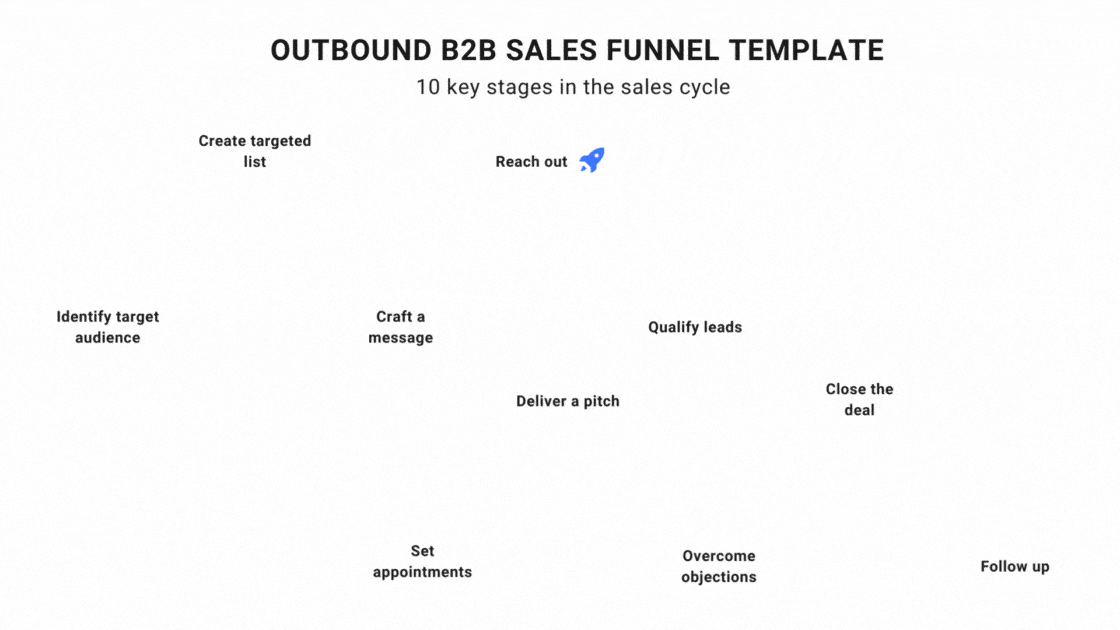
Here’s what an outbound sales funnel can look like:
- Create a targeted list: Use data and analytics tools to build a list of potential customers that fit your target audience.
- Craft an effective message: Develop personalized and compelling messaging that speaks to your potential customers’ pain points and needs.
- Reach out: Use outbound methods like cold calling, email, social media outreach, and direct mail to engage with potential customers.
- Qualify leads: Screen potential customers to determine if they are a good fit for your product or service. Use the BANT criteria (Budget, Authority, Need, Timeline) to help qualify leads.
- Set appointments: Schedule a meeting or call with qualified leads to discuss your product or service further.
- Deliver a pitch: Use a presentation, demo, or other materials to communicate the value of your product or service effectively.
- Overcome objections: Address any concerns or objections that the prospect may have and provide additional information or resources to help them make an informed decision.
- Close the deal: Ask for the sale and finalize any necessary paperwork or contracts.
- Follow up: Follow up with customers to ensure their satisfaction and offer ongoing support or additional products and services.
By following these steps, you can create a streamlined and effective outbound B2B sales funnel that can help drive more sales and grow your business.
Example of a successful outbound B2B sales funnel
Think of a software company that sells a customer relationship management (CRM) system to small and medium-sized businesses.
Like many similar companies, they use LinkedIn to identify prospects and send them personalized messages to introduce their product. That’s because they recognize that LinkedIn is the #1 platform for B2B lead generation. They qualify leads by asking their potential customers about their current CRM system, budget, and pain points.
Next, they present their own product through a demo, highlighting their unique key features, which could include advanced automation and customizability.
They address any and all objections by offering a free trial period and providing customer references. During this process, they answer questions and nurture the established relationship with personalized communication or even a special offer.
The sale is finalized by offering a customized pricing plan based on the potential customer’s needs.
However, the connection doesn’t end with the sales process. They follow up with the customer regularly to ensure satisfaction and address any concerns. That way, chances of a repeat buy or spreading recommendations increase.
Inbound B2B sales funnel template your sales team will love
An inbound B2B sales funnel is a process that uses many marketing methods to attract customers to the company’s website, online store or other digital platforms.
This approach is focused on creating valuable content and resources that address your target customer’s needs, in order to successfully attract and engage them.
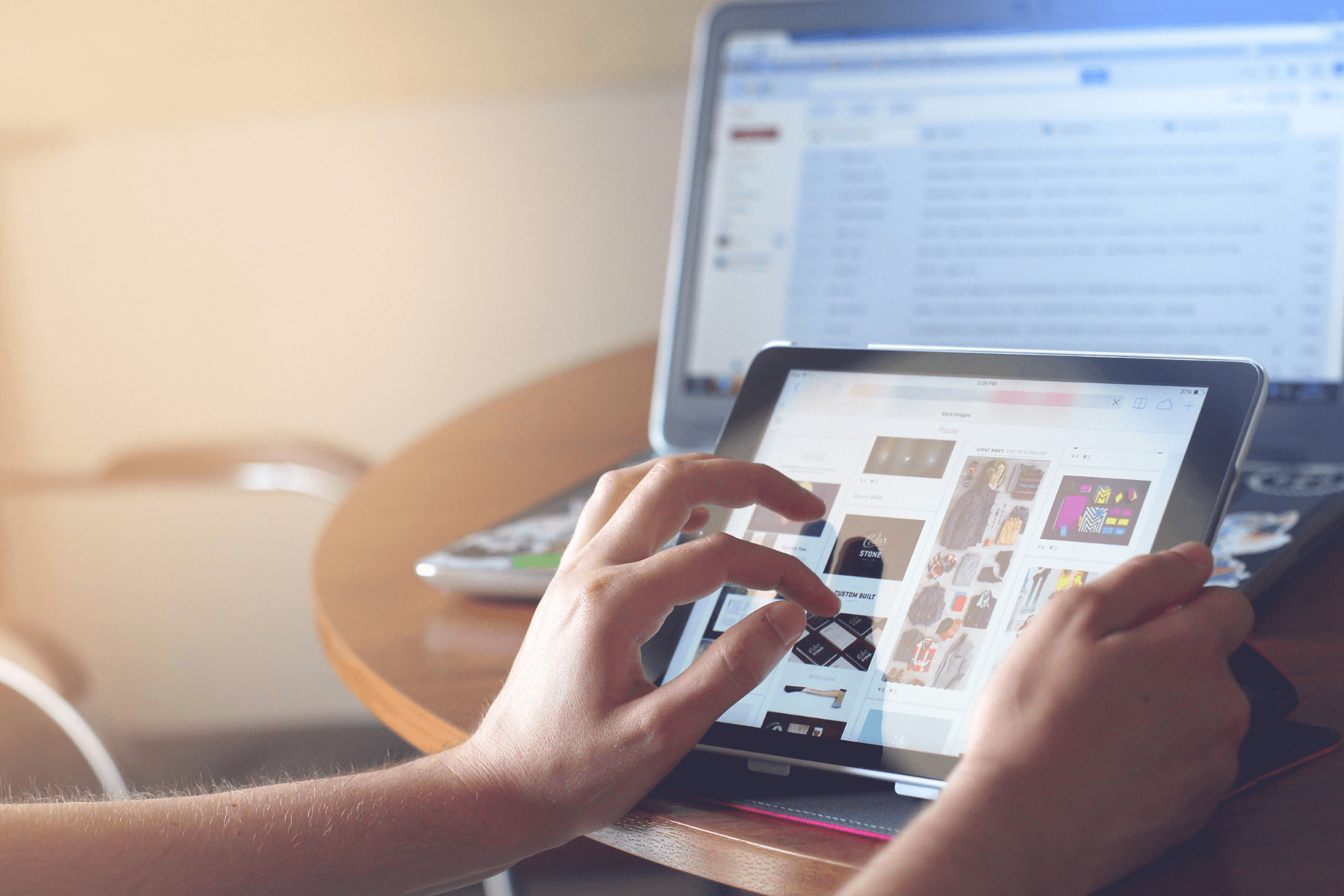
In contrast, an outbound B2B sales funnel is a more traditional approach to sales, focused on actively reaching out to potential customers through the outbound marketing tactics described above.
Outbound sales typically require a more aggressive approach, with sales reps actively seeking out potential customers and talking to them directly.
Both approaches can be effective, and the choice between them largely depends on the specific product or service being sold, as well as the target market. However, the inbound approach is generally considered to be more effective in today’s digital age, especially among B2B brands.
Step-by-step template for creating an inbound B2B sales funnel
With the inbound B2B sales funnel, it’s necessary to focus on providing value and building relationships with customers. This proves the value of your offer and the company as a whole.
The inbound sales funnel model can be broken into three main stages:
- Attract – the first step is to attract potential customers to the website through inbound marketing tactics. This usually includes informative blog posts, engaging content on social media, optimizing website SEO and running targeted ads to drive traffic.
- Convert – once potential customers have landed on the website, the next stage is to convert them into leads. Offer them something valuable in exchange for their contact information. This can be a free e-book, whitepaper or demo. Landing pages and forms designed to capture lead information and encourage sign-ups can prove to be very useful.
- Close – when a quality lead has been established, the final step is to close the sale. Nurture relationships with leads using targeted messaging and personalized offers designed to move them through the last funnel stage. Individualized content tailored to the lead’s specific needs is particularly effective.

Your work doesn’t end there, however. After the sale, continue to provide value, like customer support, additional resources or follow-up communications. This will help you to retain your customers and increase loyalty.
Example of a successful inbound B2B sales funnel
Take, for example, a marketing automation software company that leverages content as a way to attract prospective buyers. It creates blog posts, webinars, and e-books that provide valuable information about marketing automation and other topics related to the industry.
They offer a free trial of their software in exchange for the visitor’s contact information. This data is later used as part of an email marketing strategy to nurture the lead and provide them with additional value.
When the lead is ready to buy, they can easily make a purchase online or contact the sales team for personalized support. After the sale, the company continues to provide value by offering customer support, additional resources, and ongoing communications.
How to integrate LinkedIn outreach into your sales funnel?
LinkedIn is a much more powerful platform than you might think – also with regard to B2B sales. Why? It serves as a direct line of communication between businesses and their target companies.
But don’t take our word for it – research shows that it’s the #3 social media platform to generate the biggest ROI in 2022, with a score of 14%. At the same time, it ranks as only #5 amongst the most leveraged SM platforms. The key takeaway here is that there’s more than enough space here for you to get ahead of your competition.
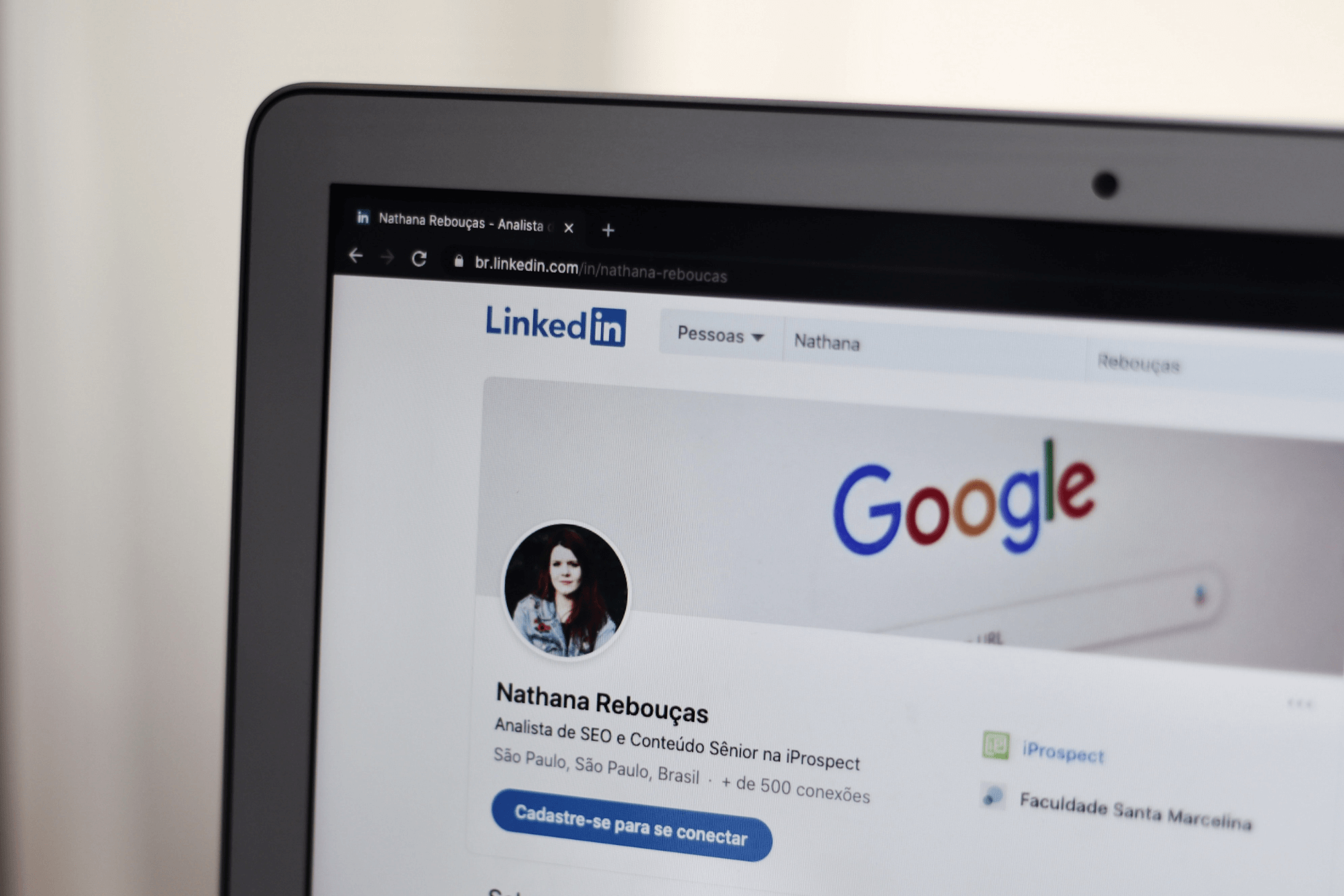
Here’s how you can integrate LinkedIn outreach into your sales funnel for B2B:
- Identify your target audience on LinkedIn. The platform is great for researching companies, job titles and industries that are likely to be interested in what you have to offer.
- Create a LinkedIn profile that highlights your product or service and positions you as an expert in your niche. Include a professional headshot or logo, a catchy headline, and a summary that clearly communicates your values. Extra points if it includes keywords.
- Build your network on LinkedIn by connecting with potential customers, partners and influencers in your industry. You can also join LinkedIn groups and participate in discussions to build a stronger presence and create genuine connections.
- Start reaching out to potential customers directly through LinkedIn messaging or e-mail. Outreach should be personalized and focused on building relationships rather than just pushing customers into the purchase stage.
- Nurture the leads you have by providing valuable content. Make your presence felt by sharing blog posts, whitepapers or other resources relevant to your industry and potential pain points or people within it.
- Finally, focus on moving leads through your sales funnel and increasing conversion rates, e.g., by scheduling demos and presentations or addressing any objections or concerns your potential or existing paying customer may have. Marketing teams confirm that their conversion rates are 2x higher on LinkedIn.
Integrating LinkedIn outreach into your sales funnel is very valuable, but only when done right.
Here are some problems you can face when using this platform:
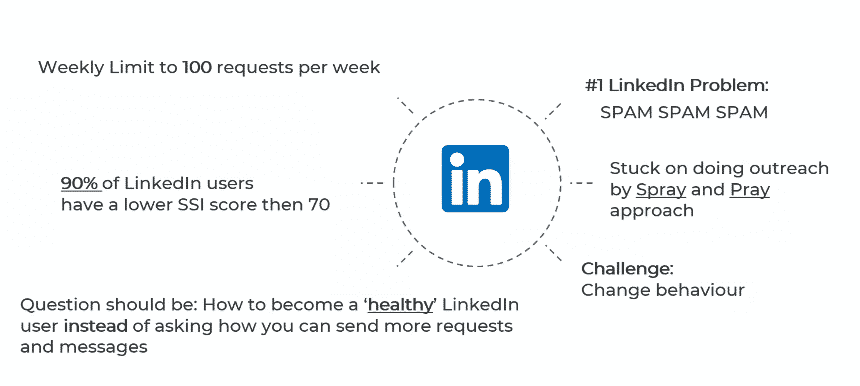
How to automate LinkedIn outreach?
If that looks like a lot, don’t worry. LinkedIn automation is your answer. It’s also the best way to keep your sales reps focused on more important tasks than spending all day on LinkedIn.
Automating LinkedIn outreach can save you precious time and drastically increase the efficiency of your sales funnel.
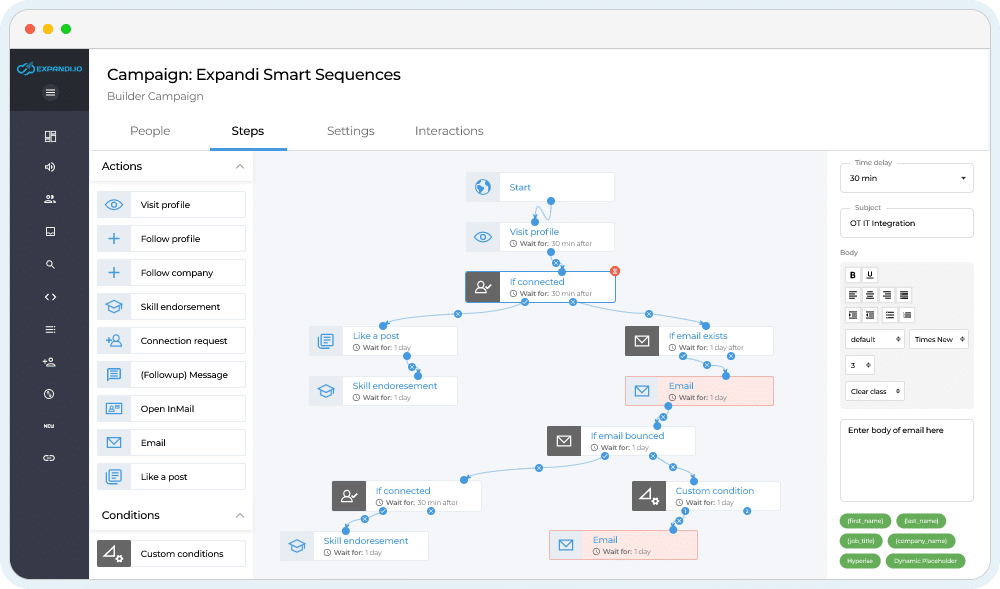
Here’s how you can start automating your LinkedIn outreach:
- Prospect on LinkedIn – use LinkedIn’s advanced search features to identify potential customers and decision-makers who meet your target criteria. You can filter by location, job title, industry, and other criteria to narrow your search.
- Initial outreach on LinkedIn – once you have identified potential customers, you can use automation tools like LinkedIn Sales Navigator or a third-party tool like Expandi to send personalized connection requests and follow-up messages at scale. This will help you cut down on the time necessary for manually sending connection requests and creating personalized messages.
- Follow up on LinkedIn – when a potential customer has accepted your connection request, Expandi will send them automated, personalized messages to qualify them as a lead (on the platform or directly via email, whenever possible).
Here’s an example of what this kind of automation can look like:
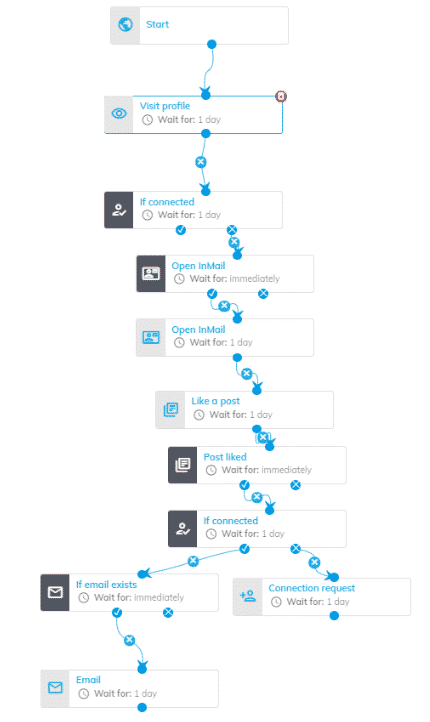
This may seem complicated, but with Expandi it’s all drag-and-drop, friendly configuration. Anyone can use the intuitive interface – you don’t have to be a tech pro.
Remember – even though automating your LinkedIn marketing funnel can be very effective, it’s still important to personalize messages and build relationships with potential customers.
Don’t forget to customize automated messages, so they include personalized details about the company you’re reaching out to. Don’t worry, all of that can be easily set up on Expandi too.
Examples of LinkedIn smart sequences in Expandi
Smart sequences are unique algorithms that help you get the most out of your multichannel sales funnel. With this tool you’ll be able to combine personalized emails, connection invites and InMails, all with hyper-personalization.
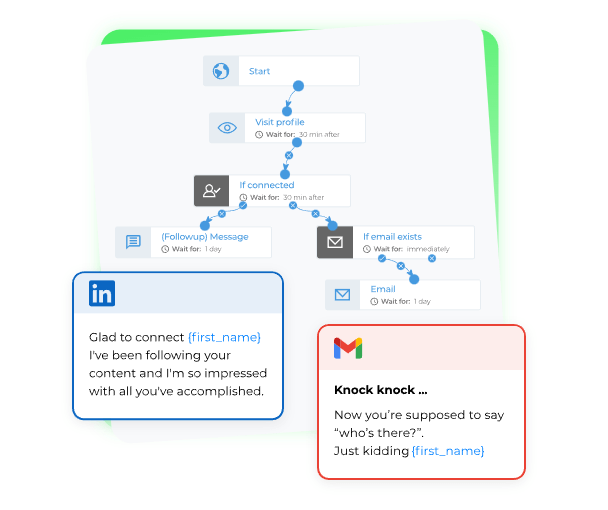
The Expandi smart sequences allow you to create any scenario you wish to optimize your workflow according to your prospective customer’s behavior.
You can choose from these nine different actions:
- visiting and viewing your many prospects’ LinkedIn profiles
- following their profiles
- following their company pages
- endorsing their skills
- sending invites (without having to worry about exceeding the daily invite limit)
- sending personalized follow-up messages
- sending InMails directly to your 2nd and 3rd-degree connections
- liking your prospective customer’s latest post
- combining email with your LinkedIn outreach
How many and which ones of those points will you include in your new, sustainable strategy? That’s entirely up to you. Add as many steps as you wish.
You can even define the delay time between them to make sure your actions are as human-like as possible. The drag-and-drop campaign builder doesn’t require any technical knowledge.
Here’s what that can look like, in the scenario where a potential lead visits your profile:
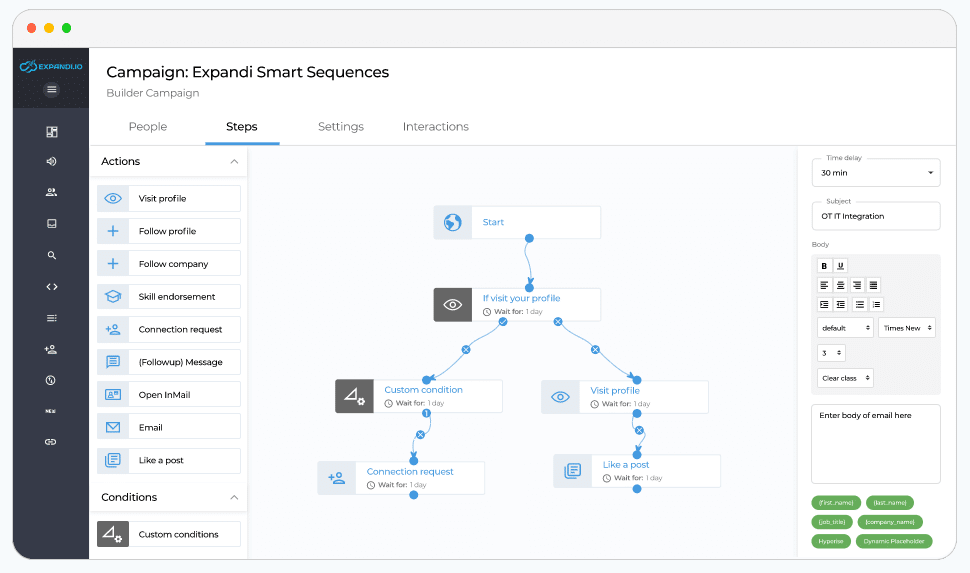
This sequence should successfully push quality leads from the awareness stage to the interest stage, at least.
Measure success and optimize your sales and marketing efforts
Optimizing your B2B sales funnels requires a data-driven approach. With a systematic approach and focus on continuous improvement, it’s possible to drive more sales and drastically increase your ROI.
Wondering what are some ways to improve the marketing funnel of your business model? Read on to find out.
Key metrics
Start by identifying key metrics that will help to effectively track your progress. Using real statistics instead of guesswork will significantly help you determine areas in need of improvement.
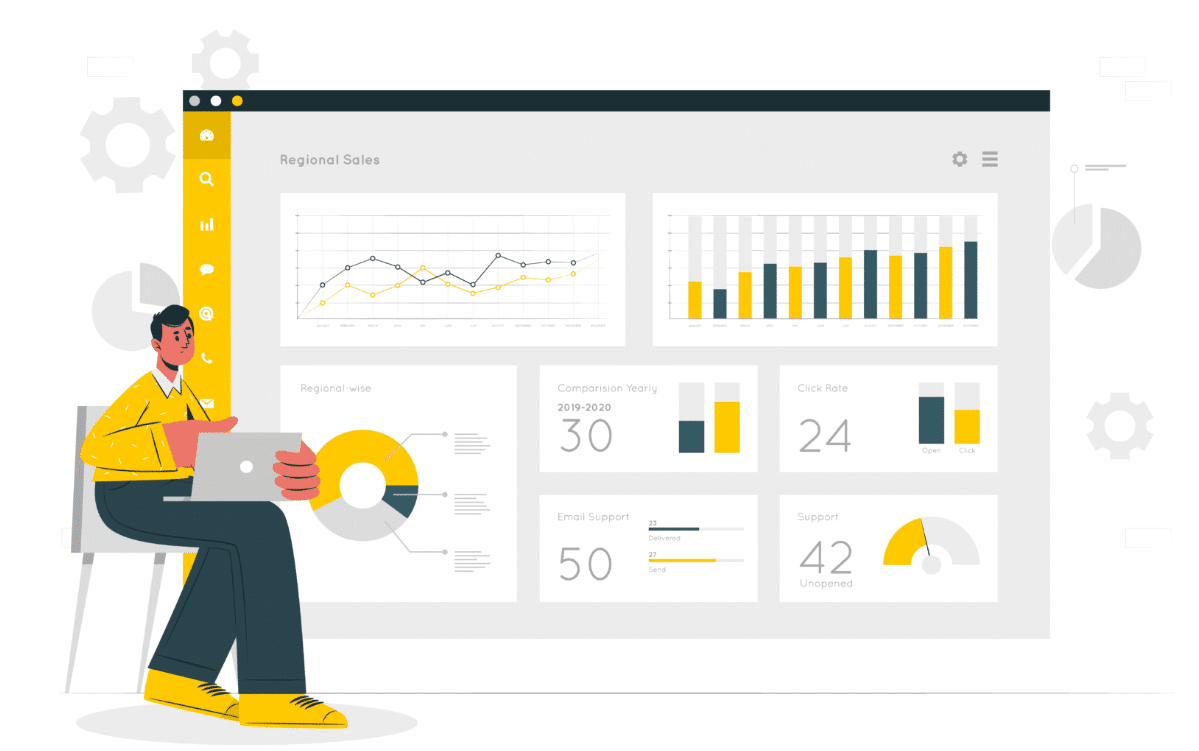
KPIs can be slightly different for all companies and their unique characteristics. They usually include metrics such as lead generation rate, conversion rate, customer acquisition cost or lifetime value of existing customers.
Funnel performance analysis
Analyzing the performance of the sales funnel itself will help identify areas where potential customers may be dropping off or experiencing issues.
Collecting this data is crucial if you want to improve the customer journey. The funnel performance analysis involves reviewing website analytics, sales data and customer feedback, all of which will aid in identifying areas for improvement.
A/B Tests
A/B testing is based on trying out different variations of marketing messages, landing pages, etc. to determine what works best in terms of generating leads and driving conversions.
Testing different options allows you to clearly and explicitly identify what resonates most with your target audience and optimize your marketing strategy accordingly.
Continuous optimization
Needless to say, collecting data is not enough to see actual results. The key is to act on it.
So, the natural next step is to keep optimizing your marketing funnel based on the points listed above. It’s not enough to do it once and forget about it. This is a fast-paced world, in which your customers and their needs are constantly changing – so it’s important that your company does so too.
This may involve even some not necessarily obvious aspects, such as tweaking your website design or messaging style. Consider any and all elements which can potentially help to effectively grab customer attention, improve their experience and increase the likelihood of generating quality leads and closing sales.
Conclusion
B2B sales funnels are a concept of a virtual space combining selling and buying with marketing processes.
By implementing a well-designed sales funnel, businesses can streamline their sales pipeline, generate qualified leads and close deals more effectively.
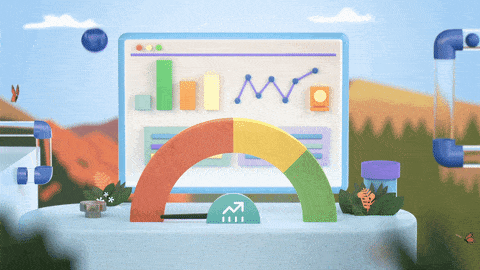
Whether you’re focused on outbound or inbound sales, we’ve got you covered with ready-to-use templates to help your sales and marketing teams.
With the right approach and tools, carefully constructed B2B sales funnels are a powerful engine to boost your business growth.
Expandi can help you to automate your outreach on LinkedIn, which is particularly important for B2B companies. This platform is the #1 way to connect directly between businesses. Sign up for a free trial to see how you can get the best out of your LinkedIn strategy – no bans, no wasted time, just results.
FAQs
- What is the difference between B2B and B2C sales funnel?
The main difference between B2B and B2C sales funnels is the target audience and the sales process itself.To put it simply, B2B sales funnels are designed to sell certain products or services to other businesses, while B2C sales funnels are designed to sell products or services directly to individual consumers.B2B sales funnels typically involve longer sales cycles. This is because there is often more than one decision-maker involved in the purchasing process. B2C sales funnels have shorter sales cycles since consumers tend to make purchasing decisions based on their personal preferences. - What are the four types of B2B Selling?
- Transactional selling – selling products or services that are relatively low in cost and require minimal effort from sales teams. This type is typically used for products with a short sales cycle and a large customer base. Some examples include office supplies, cleaning services and consumables.
- Consultative selling – this requires understanding the customer’s needs and offering a solution that meets them. This involves building customer relationships and providing guidance throughout the sales process. Examples of this type include complex software solutions, marketing services or custom-built equipment.
- Strategic selling – involves high-value customers and building long-term relationships with them. This process requires a deep understanding of the customer’s business and strategic goals, as well as the ability to offer customized solutions that align with them. Examples include enterprise software solutions, consulting services and high-end equipment.
- Solution selling – this requires identifying the customer’s problem and offering a customized solution that meets their unique needs. This often involves a team of experts who work together to identify the customer’s requirements and design a solution that fits those requirements. Examples include complex IT systems, manufacturing equipment or industrial automation solutions.
- What is a B2B sales
A B2B sales funnel is a series of steps that a business-to-business company guides its potential buyers through in order to convert them into paying customers.The goal of the B2B sales funnel is to attract potential buyers and ultimately guide them through the sales process to make a purchase.The best result you can hope for is getting them into the loyalty stage when they willingly return to your services over competitor companies.
- What is the sales funnel in B2B?
As we’ve already established, a sales funnel is the process of turning prospects into buyers. The B2B sales funnel specifically includes stages such as lead generation, lead qualification, lead nurturing, proposal, and closing.The purpose of the sales funnel is to systematically move other businesses through the consecutive stages of the buying process while building trust and credibility.
You’ve made it all the way down here, take the final step


